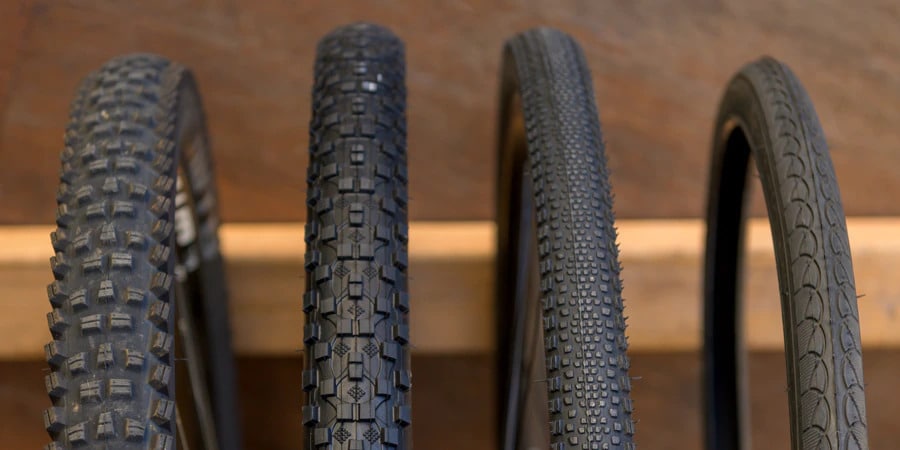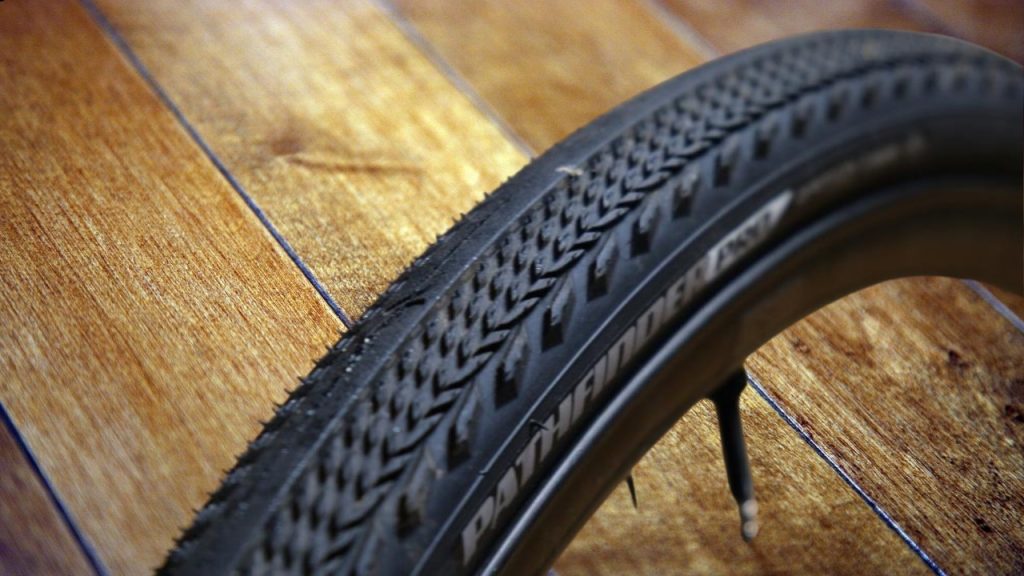The Rise of Gravel Tires for Road Bikes
Gravel tires have gained significant popularity in the road bike community, thanks to their versatility and ability to perform well on various surfaces. These tires, with their distinct tread patterns and robust construction, offer numerous advantages over traditional road bike tires. Road bike gravel tires cater to cyclists who crave adventure and seek to explore diverse terrains, from smooth pavement to rough gravel paths.
Selecting the appropriate gravel tires for your road bike is crucial, as it directly impacts your overall cycling experience. Factors such as tire width, tread pattern, and rubber compound play essential roles in determining the tire’s performance on different road conditions. For instance, wider gravel tires generally provide better traction and shock absorption on rough terrains, while tires with aggressive tread patterns enhance grip on loose surfaces.
In this article, we will delve deeper into the world of road bike gravel tires, exploring their key features, benefits, and installation processes. We will also compare various gravel tire models, focusing on aspects like performance, durability, and value for money. By the end of this article, you will have a solid understanding of gravel tires and be well-equipped to make an informed decision when selecting the ideal tires for your road bike.
Understanding Gravel Tire Specifications
Road bike gravel tires come in various specifications, each designed to cater to specific cycling needs and preferences. Here, we will discuss three key factors that influence a gravel tire’s performance on different surfaces:
Tread Patterns
Tread patterns on gravel tires range from smooth and slick to aggressive and knobby. Smooth tread patterns, similar to those found on road bike tires, offer low rolling resistance and are suitable for paved roads and hard-packed gravel. In contrast, aggressive tread patterns enhance grip and traction on loose, soft, or slippery surfaces, such as mud, sand, or wet gravel.
Width
Gravel tire width typically ranges from 28mm to 50mm. Wider tires provide better shock absorption, traction, and stability on rough terrains, making them ideal for off-road adventures. Narrower tires, on the other hand, offer lower rolling resistance and are more suited for smoother surfaces. When selecting the width of your road bike gravel tires, consider the types of roads and terrains you will be riding on, as well as your personal comfort and performance preferences.
Rubber Compounds
The rubber compound of a gravel tire affects its grip, durability, and rolling resistance. Softer rubber compounds generally offer better grip and traction but wear down faster, while harder compounds are more durable and resistant to wear but may sacrifice some grip. Some gravel tire manufacturers use dual-compound rubber, which combines a softer, grippier shoulder with a harder, more durable center strip for a balance of grip and longevity.
By understanding these specifications, you can make a more informed decision when choosing road bike gravel tires that cater to your unique cycling needs and preferences. In the following sections, we will discuss our top picks for gravel tires and provide a step-by-step guide on installing them on your road bike.
Selecting the Best Gravel Tires for Road Bikes
When it comes to gravel tires for road bikes, several high-quality options cater to various cycling needs and preferences. Here are our top picks:
Panaracer GravelKing SK
The Panaracer GravelKing SK is a versatile tire that offers a smooth and comfortable ride on various surfaces. Its low-profile tread pattern provides excellent grip on hard-packed gravel and paved roads, while the high-quality rubber compound ensures durability and resistance to punctures. The GravelKing SK is available in multiple width options, allowing cyclists to choose the perfect tire for their specific needs.
WTB Byway
The WTB Byway is designed for cyclists who want to explore off the beaten path without sacrificing speed. Its unique tread pattern combines low-rolling resistance with impressive grip on loose surfaces, making it an excellent choice for gravel roads and dirt trails. The Byway features a durable casing and puncture-resistant technology, ensuring long-lasting performance and peace of mind on your adventures.
Terrene Elwood
The Terrene Elwood is a do-it-all tire that excels on gravel, dirt, and pavement. Its aggressive tread pattern offers superior traction on loose surfaces, while the center tread provides a smooth and efficient roll on hard-packed terrain. The Elwood features a tubeless-ready design, making it easy to install and maintain, and its reinforced sidewalls ensure durability and resistance to cuts and abrasions.
Ritchey Megabite
The Ritchey Megabite is a serious gravel tire for cyclists who demand ultimate performance on challenging terrain. Its aggressive tread pattern and high-volume design provide exceptional traction and shock absorption on rough gravel roads and technical trails. The Megabite features a durable rubber compound and reinforced sidewalls, ensuring long-lasting performance and reliability in various conditions.
By considering factors such as tread patterns, width, and rubber compounds, you can select the ideal road bike gravel tires for your unique cycling needs and preferences. In the following sections, we will discuss how to install these tires on your road bike and provide tips for maintaining them for optimal performance.
How to Install Gravel Tires on Your Road Bike
Switching to road bike gravel tires can be a straightforward process if you follow the proper steps and take necessary precautions. Here’s a step-by-step guide on installing gravel tires on your road bike:
Tools and Materials Needed
To install gravel tires on your road bike, you will need the following tools and materials:
- New gravel tires
- Tire levers
- Presta or Schrader valve adapter (if your floor pump does not support the valve type on your tires)
- Rag or brush for cleaning
- Tubeless sealant (if using tubeless tires)
Step 1: Remove the Old Tires
Start by deflating the old tires completely. Use tire levers to carefully pry one side of the tire off the rim, exposing the inner tube or tubeless rim tape. Once you have removed one side of the tire, pull the rest of it off the rim, taking care not to damage the rim or inner tube.
Step 2: Clean the Rim
Use a rag or brush to clean any dirt, debris, or old sealant from the rim’s edge and inside the rim well. This step is crucial for ensuring a proper seal when installing tubeless tires.
Step 3: Install the New Tires
Begin by mounting one side of the new gravel tire onto the rim, ensuring that the tire bead seats securely on the rim’s edge. Once you have one side of the tire on, inflate it slightly using a floor pump or CO2 inflator. This will help the tire bead pop onto the rim more easily.
Step 4: Install the Inner Tube or Sealant
If using tubed tires, insert the inner tube into the tire, ensuring that the valve stem aligns with the rim’s valve hole. Inflate the inner tube slightly to give it shape, then carefully push the rest of the tire onto the rim. For tubeless tires, apply tubeless sealant inside the tire before seating the tire on the rim.
Step 5: Inflate and Check for Leaks
Inflate the tire to the recommended pressure, then check for leaks around the rim and tire bead. If using tubeless tires, ensure that the tire bead is properly seated and that there are no air leaks. If you find any leaks, deflate the tire, apply more sealant, and re-inflate the tire to check for leaks again.
By following these steps, you can successfully install road bike gravel tires on your road bike, ensuring a secure and comfortable fit for your next adventure. In the following sections, we will discuss best practices for maintaining your gravel tires to ensure optimal performance and longevity.
Maintaining Gravel Tires for Optimal Performance
Proper maintenance of your road bike gravel tires is essential for ensuring optimal performance, longevity, and safety. Here are some tips and best practices for maintaining your gravel tires:
Inflating to the Correct Pressure
Maintaining the correct tire pressure is crucial for ensuring proper traction, reducing rolling resistance, and preventing punctures. Use a tire pressure gauge to check the pressure regularly, and inflate your tires to the recommended pressure listed on the tire’s sidewall. Keep in mind that gravel tires typically require lower pressure than traditional road bike tires to provide better shock absorption and traction on rough surfaces.
Cleaning Your Tires Regularly
Cleaning your gravel tires regularly can help prevent the buildup of dirt, debris, and grime, which can damage the tire and reduce its performance. Use a brush and soapy water to clean your tires after each ride, paying particular attention to the tread pattern and sidewalls. Rinse the tires thoroughly and dry them before storing them.
Monitoring for Wear and Tear
Regularly inspect your gravel tires for signs of wear and tear, such as cuts, abrasions, or bald spots. If you notice any damage, replace the tire immediately to prevent accidents and ensure optimal performance. It’s also essential to check the tire’s tread depth regularly, as shallow tread can reduce traction and increase the risk of punctures.
Storing Your Tires Properly
Proper storage of your gravel tires can help extend their lifespan and prevent damage. Store your tires in a cool, dry place away from direct sunlight and harsh chemicals. If you’re storing your tires for an extended period, inflate them slightly to prevent flat spots from forming.
By following these maintenance tips, you can ensure that your road bike gravel tires perform at their best and last as long as possible. In the following sections, we will compare the performance and durability of some of the top gravel tires on the market, focusing on aspects like grip, puncture resistance, and rolling resistance.
Comparing Gravel Tires: Performance and Durability
When selecting road bike gravel tires, it’s essential to consider their performance and durability. Here’s a comparison of some of the top gravel tires on the market, focusing on aspects like grip, puncture resistance, and rolling resistance:
Panaracer GravelKing SK
The Panaracer GravelKing SK is a popular choice among cyclists looking for a versatile and durable gravel tire. Its tread pattern features a low-profile center section for reduced rolling resistance and larger side knobs for improved cornering grip. The tire’s casing is made from high-quality materials, providing excellent puncture resistance and durability. Additionally, the GravelKing SK is available in various width options, allowing cyclists to choose the perfect tire for their specific needs.
WTB Byway
The WTB Byway is another excellent option for cyclists seeking a high-performance gravel tire. Its tread pattern features a smooth center section for reduced rolling resistance and subtle side knobs for improved cornering grip. The Byway’s casing is made from a durable, puncture-resistant material, ensuring long-lasting performance and reliability. The tire is also available in multiple width options, making it suitable for various road conditions and terrains.
Comparing Performance and Durability
Both the Panaracer GravelKing SK and the WTB Byway offer excellent performance and durability. The GravelKing SK features a more aggressive tread pattern, making it an ideal choice for cyclists who frequently ride on loose or uneven surfaces. The Byway, on the other hand, features a smoother tread pattern, making it better suited for cyclists who primarily ride on hard-packed gravel or paved roads. Both tires offer excellent puncture resistance and durability, ensuring long-lasting performance and reliability.
Real-World Examples and User Reviews
Real-world examples and user reviews support the performance and durability of these gravel tires. Cyclists report that the Panaracer GravelKing SK provides excellent traction and durability, even on rough and rocky terrain. Similarly, users praise the WTB Byway for its smooth ride and long-lasting performance. Both tires have received high ratings from cyclists, making them popular choices for road bike gravel tires.
By comparing the performance and durability of these top gravel tires, cyclists can make an informed decision when selecting the best tires for their specific needs and preferences. In the following section, we will offer suggestions on how to maximize the versatility of gravel tires on road bikes, such as exploring new routes, participating in gravel races, or even commuting.
Maximizing the Versatility of Gravel Tires on Road Bikes
Gravel tires offer road bike enthusiasts a versatile and exciting way to explore new routes and terrains. By adapting your riding style to suit the tire’s capabilities, you can make the most of your gravel tires and enjoy a wide range of cycling experiences. Here are some suggestions on how to maximize the versatility of gravel tires on road bikes:
Exploring New Routes
Gravel tires open up a world of possibilities when it comes to exploring new routes. With their increased traction and durability, you can venture off the beaten path and discover hidden gems that traditional road bike tires might not be able to handle. Consider researching local gravel routes or joining a gravel cycling group to discover new places to ride.
Participating in Gravel Races
Gravel races are becoming increasingly popular, offering cyclists a challenging and exciting alternative to traditional road races. Gravel tires are essential for these events, as they provide the necessary traction and durability to handle the rough and varied terrain. Participating in gravel races is an excellent way to test your skills and push your limits while enjoying a unique and rewarding cycling experience.
Commuting with Gravel Tires
Gravel tires can also be an excellent option for commuting, especially if your route includes a mix of paved and unpaved surfaces. The increased traction and durability of gravel tires can make your commute more comfortable and enjoyable, even in less-than-ideal weather conditions. Additionally, gravel tires can help reduce the risk of punctures and flats, ensuring a more reliable and hassle-free commute.
Adapting Your Riding Style
To make the most of your gravel tires, it’s essential to adapt your riding style to suit the tire’s capabilities. Gravel tires typically have a larger volume and a more aggressive tread pattern than traditional road bike tires, which can affect your bike’s handling and acceleration. By adjusting your riding style to account for these differences, you can maximize the benefits of your gravel tires and enjoy a safer, more comfortable ride.
By exploring new routes, participating in gravel races, commuting with gravel tires, and adapting your riding style, you can make the most of your road bike gravel tires and enjoy a wide range of cycling experiences. In the following section, we will summarize the key factors to consider when selecting gravel tires for road bikes, encouraging readers to weigh their options carefully and choose the best tires for their specific needs and preferences.
Making an Informed Decision: Factors to Consider When Choosing Road Bike Gravel Tires
Selecting the right gravel tires for your road bike is a crucial decision that can significantly impact your cycling experience. By considering the following factors, you can make an informed decision and choose the best tires for your specific needs and preferences:
Tread Pattern
The tread pattern of gravel tires is an essential factor to consider, as it affects the tire’s traction and handling on different surfaces. Gravel tires typically feature a more aggressive tread pattern than traditional road bike tires, with larger knobs and more spacing between the tread blocks. This design provides better traction and stability on loose surfaces, such as gravel and dirt. However, it can also increase rolling resistance and reduce speed on paved roads. Consider the types of surfaces you will be riding on and choose a tread pattern that balances traction and speed.
Width
The width of gravel tires is another critical factor to consider, as it affects the tire’s volume, contact patch, and comfort. Gravel tires are typically wider than traditional road bike tires, with widths ranging from 32mm to 50mm or more. A wider tire provides a larger contact patch, which can improve traction and stability on loose surfaces. However, it can also increase rolling resistance and reduce speed on paved roads. Consider the types of surfaces you will be riding on and choose a width that balances traction, comfort, and speed.
Rubber Compound
The rubber compound of gravel tires is an often-overlooked factor that can significantly impact the tire’s performance and durability. The rubber compound affects the tire’s grip, puncture resistance, and rolling resistance. Softer rubber compounds provide better grip and traction but wear down faster, while harder rubber compounds are more durable but offer less grip. Consider the types of surfaces you will be riding on and choose a rubber compound that balances grip, durability, and rolling resistance.
Price and Quality
The price and quality of gravel tires are also important factors to consider. High-quality gravel tires typically cost more than traditional road bike tires, but they offer better performance, durability, and value in the long run. When comparing prices, consider the tire’s features, specifications, and user reviews to ensure that you are getting the best value for your money.
By considering these factors, you can make an informed decision when selecting road bike gravel tires and choose the best tires for your specific needs and preferences. Remember to weigh your options carefully, read user reviews, and choose tires that balance traction, durability, and speed. With the right gravel tires, you can enjoy a safer, more comfortable, and more versatile cycling experience on various surfaces and terrains.








